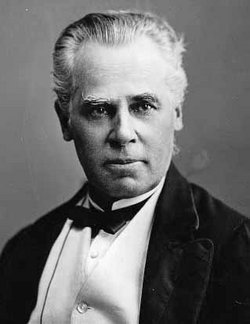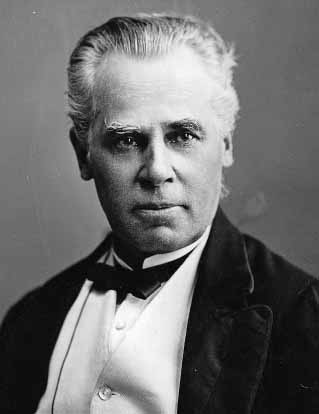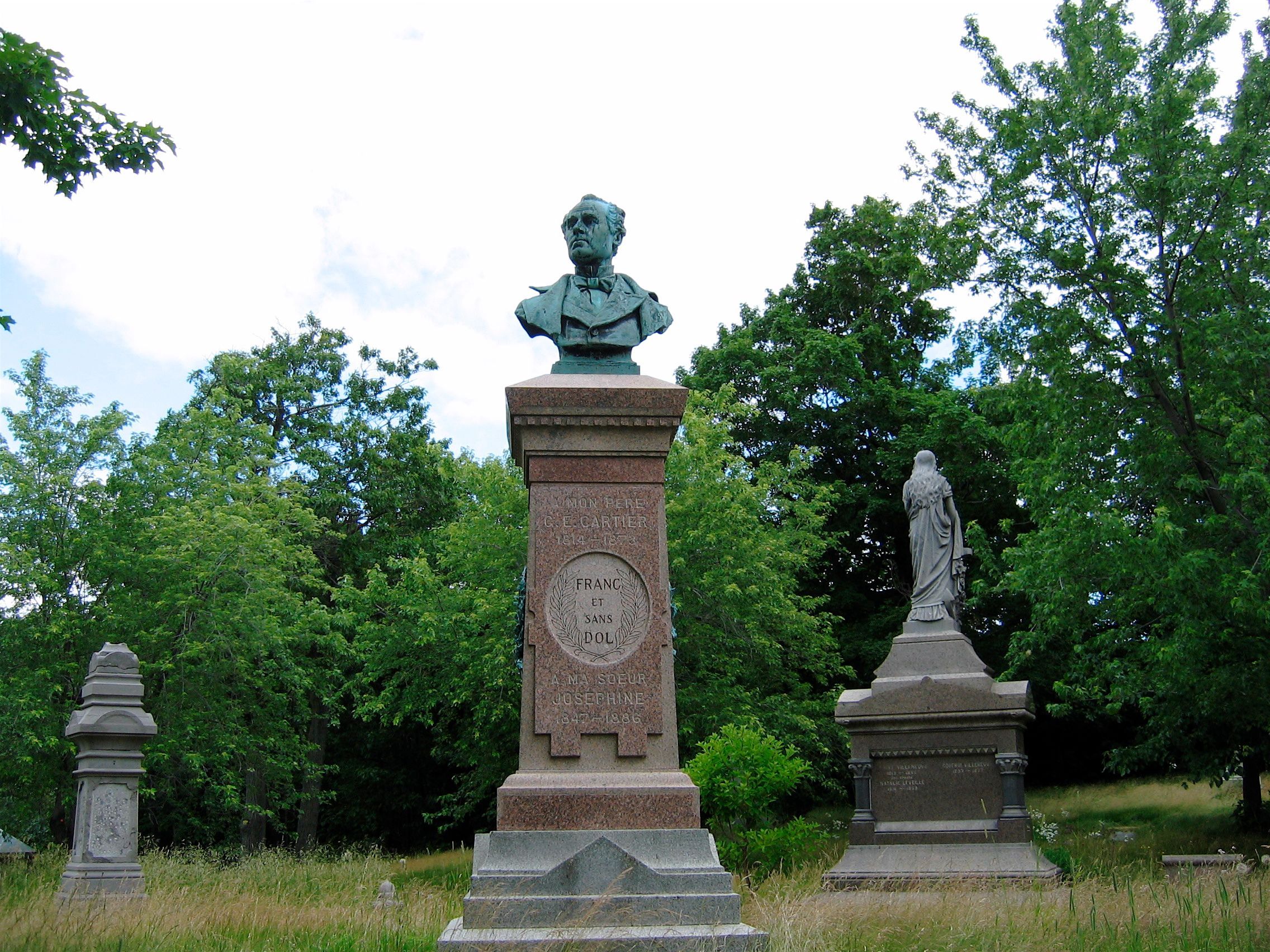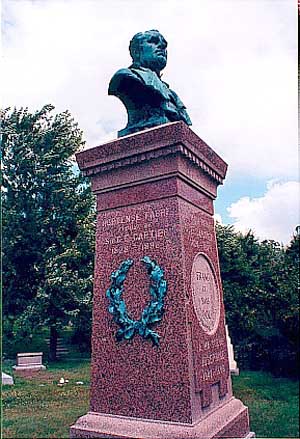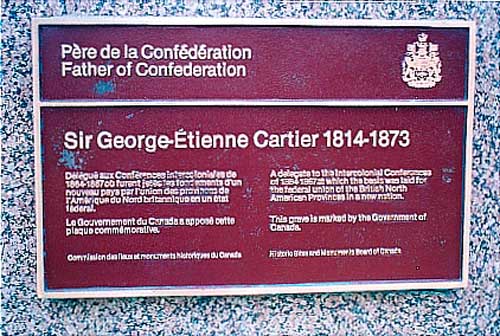Canadian Politician. He served as the Premier of Canada East, and is considered the "Father of Confederation." Born in what would eventually become the province of Quebec, he was named in honor of King George III. After completing his secondary education in 1831, Cartier pursued a career in the legal profession and began to practice law in 1835. He participated in the Lower Canada Rebellion of 1837 and consequently spent a year in exile in the United States, after which he returned to Montreal and his law practice. Cartier married Hortense Fabre, daughter of Édouard-Raymond Fabre, wealthy bookseller and politician, and Luce Perrault, on June 16, 1846 at Nôtre-Dame de Montréal. His brother-in-law was Édouard-Charles Fabre, who became the first Archbishop of Montreal. Cartier became active in politics and served as Premier of Canada East from 1858 to 1862. He was also one of the Fathers of Confederation and, of those, one of the men chiefly responsible for the process of Canadian Confederation which resulted in the creation of the Dominion of Canada in 1867. His single greatest achievement may have been the inclusion of Canada East (Quebec) into the Confederation. With Confederation in 1867, John Alexander Macdonald became the first Prime Minister of Canada and Cartier became his Minister of Militia. Until his death in 1873, he remained Macdonald's loyal friend and principal lieutenant. He held several additional elected offices. Cartier developed kidney disease in 1871. He sought treatment in London in 1872, but was unsuccessful. He died in London the following year at the age of 58. His body was brought back to Canada on the "Prussian" which arrived in Quebec on June 8, 1873. He lay in state at the Palais de Justice in Montreal. His funeral procession to Nôtre-Dame drew records crowds. After the funeral, he was interred at Nôtre-Dame des Neiges. His marriage to Hortense Fabre had not been successful. They had three daughters, one of whom died in infancy. He led a life separate from his wife and daughters. His wife did not attend the funeral service held for him in London, and never returned to Montreal after his death. She lived out her life in Cannes, France. However, his wife and daughters were interred with Cartier at Nôtre-Dame des Neiges.
Canadian Politician. He served as the Premier of Canada East, and is considered the "Father of Confederation." Born in what would eventually become the province of Quebec, he was named in honor of King George III. After completing his secondary education in 1831, Cartier pursued a career in the legal profession and began to practice law in 1835. He participated in the Lower Canada Rebellion of 1837 and consequently spent a year in exile in the United States, after which he returned to Montreal and his law practice. Cartier married Hortense Fabre, daughter of Édouard-Raymond Fabre, wealthy bookseller and politician, and Luce Perrault, on June 16, 1846 at Nôtre-Dame de Montréal. His brother-in-law was Édouard-Charles Fabre, who became the first Archbishop of Montreal. Cartier became active in politics and served as Premier of Canada East from 1858 to 1862. He was also one of the Fathers of Confederation and, of those, one of the men chiefly responsible for the process of Canadian Confederation which resulted in the creation of the Dominion of Canada in 1867. His single greatest achievement may have been the inclusion of Canada East (Quebec) into the Confederation. With Confederation in 1867, John Alexander Macdonald became the first Prime Minister of Canada and Cartier became his Minister of Militia. Until his death in 1873, he remained Macdonald's loyal friend and principal lieutenant. He held several additional elected offices. Cartier developed kidney disease in 1871. He sought treatment in London in 1872, but was unsuccessful. He died in London the following year at the age of 58. His body was brought back to Canada on the "Prussian" which arrived in Quebec on June 8, 1873. He lay in state at the Palais de Justice in Montreal. His funeral procession to Nôtre-Dame drew records crowds. After the funeral, he was interred at Nôtre-Dame des Neiges. His marriage to Hortense Fabre had not been successful. They had three daughters, one of whom died in infancy. He led a life separate from his wife and daughters. His wife did not attend the funeral service held for him in London, and never returned to Montreal after his death. She lived out her life in Cannes, France. However, his wife and daughters were interred with Cartier at Nôtre-Dame des Neiges.
Bio by: Anne Philbrick
Inscription
A MON PERE
C. E. CARTIER
1814 - 1873
FRANC
ET
SANS
DOL
A MA SOEUR
JOSEPHINE
1847 - 1886
Family Members
Advertisement
See more Cartier memorials in:
Records on Ancestry
Sponsored by Ancestry
Advertisement
